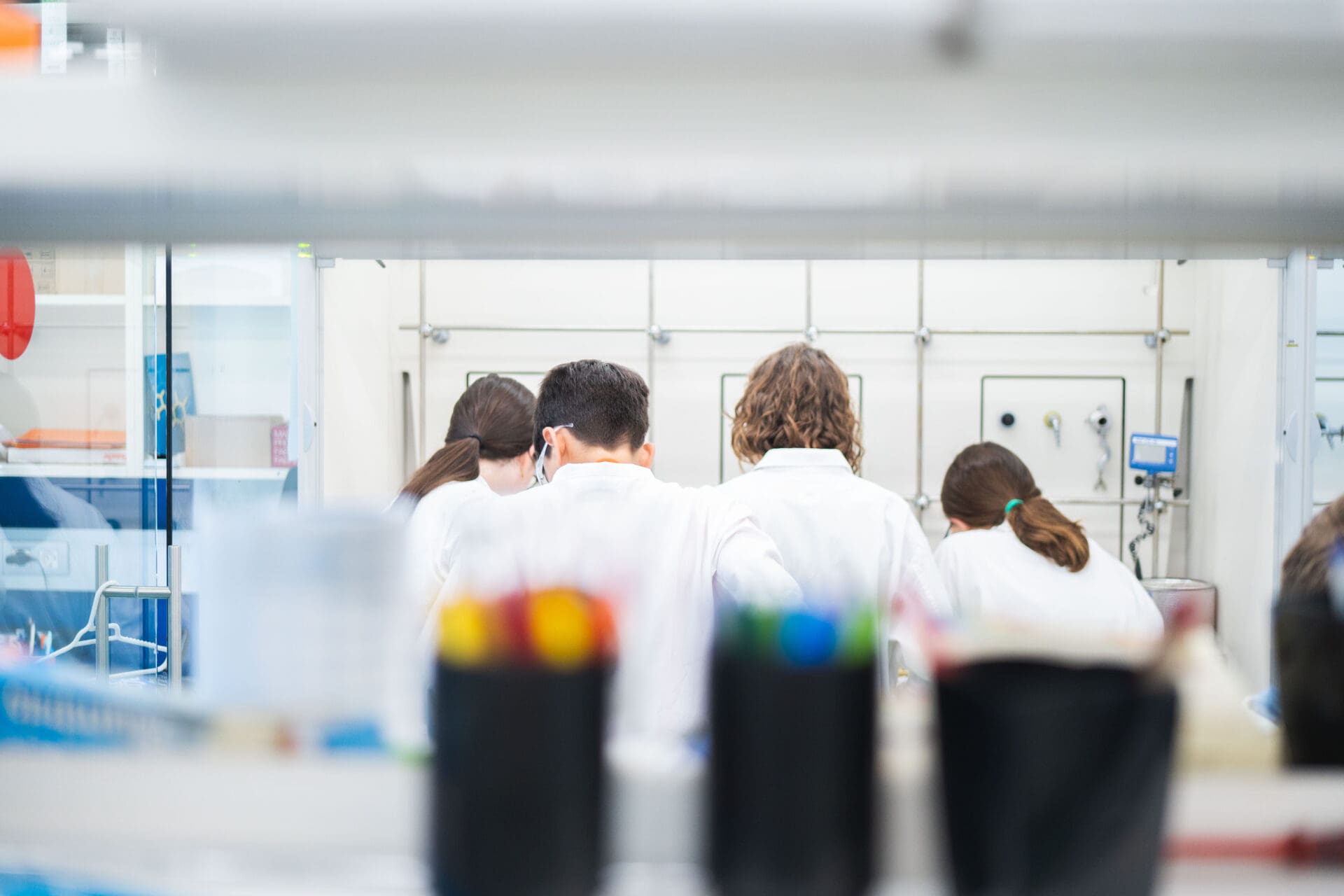Catalysis and autocatalysis
Objective: Observe an example of autocatalysis

-
Laboratory materials
Test tubes and rack
Beakers
Syringes
Pasteur pipettes
-
Reagents
Oxalic acid 1 M (HOOCCOOH)
Sulfuric acid (H2SO4)
Potassium permanganate 0.02 M (KMnO4)
Manganese(II) sulfate (MnSO4)
Water
-
Safety
Don't forget the gloves, lab coat, and safety goggles!!!
-
Questions
How did you prepare the initial solutions?
Which reactions are taking place?
Procedure
- Prepare the following solutions:
- 100 mL of oxalic acid 1 M, adding a bit of sulfuric acid (to facilitate the solution).
- 100 mL of potassium permanganate 0.02 M.
- Put 5 mL of the oxalic acid solution into 2 test tubes and add 2 drops of the potassium permanganate solution.
- In only one of the tubes, add a tiny amount of manganese(II) sulfate.
- Shake both tubes and observe.
Theoretical explanation:
The solution in the tube where we added manganese sulfate discolors very quickly while the other tube remains violet. However, after a while, it also discolors quickly and not gradually.
The reaction taking place is the following:
5 HOOC–COOH + 2 MnO4– + 6 H+ 2 Mn2+ + 10 CO2 + 8 H2O
It is a slow reaction, but it is catalyzed by the Mn2+ ion. In the first tube, we added a little, and in the second, we did not, but since it starts to form as it is also a product of the reaction, the reaction then self-catalyzes and becomes faster.















